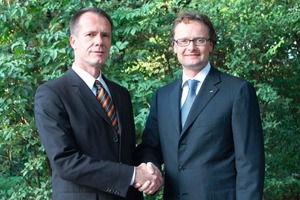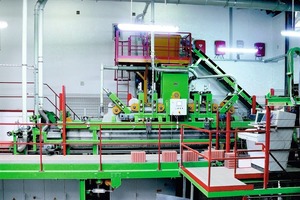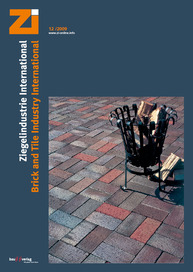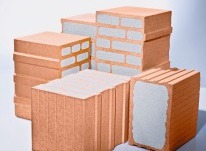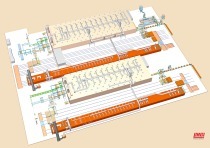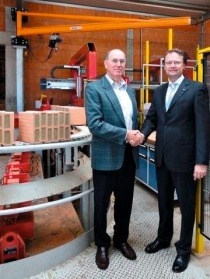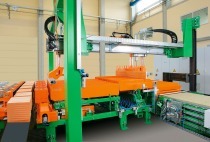Standardized brickmaking plants based on “Coriso technology”
contractor Lingl and heavy clay conglomerate Unipor Brick Group announced at Ceramitec 2009 in Munich, the two companies have agreed to jointly market plant and apparatus for insulated bricks. The cooperation will cover the international marketing of modularized “Coriso technology“ filling systems for use in the production of highly insulative masonry units.
The term “Coriso technology” (core + insulation) describes a special filling technique by means of which insulating materials can even be injected into bricks with intricate core patterns. That way, conventional building bricks with numerous perforations can be filled with insulating material without need of altering their traditional constitution. This patented process produces highly insulative rectified bricks that satisfy the most stringent of energy conservation standards – and require no expensive supplementary insulation for the exterior walls (WDV system). Since the original rectified bricks remain unaltered (except for the filling), the “stuffed” bricks can be cut and placed just like before at the construction site. In other words, the masons do not have to learn any new techniques.
When it came to choosing just the right insulating material for the filling, the Unipor Group opted in favour of mineral wool made from basalt that has been melted down, spun, compacted and then granulated. One cubic metre of raw material yields some 30 cubic metres of granules. This natural insulant is obtained with no chemical additives, solvents or other polluting ingredients.
Expanding out
from Germany
From the word go, Lingl was responsible for making the Coriso insertion system. Building on experience gained over the past three years, the renowned plant and equipment specialist developed a standardized filling plant for Coriso bricks that can serve on international markets. “The teething problems have all been solved”, explains Lingl CEO Frank Appel, “and we can now apply Coriso technology to brick production at any plant we wish, anywhere in the world.” The single-train filling line docks easily onto a pre-existing rectifying system, so no major conversion work is necessary, and the production capacity can be adjusted to the throughput of the rectifying equipment.
The decisive feature of this very special filling process is its “shaking” as the bricks pass along on a vibrating conveyor, the granules of mineral wool falls like snow into the bricks from above. To ensure that the insulating material adheres well to the brick body, it is moistened with environmentally neutral water glass just prior to filling. Then, the mineral wool hardens, and the fill is permanently anchored inside the brick. What makes this unique process so special is that the mineral wool can be injected into practically any known brick perforation pattern.

